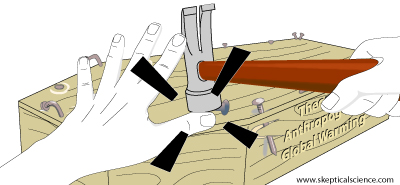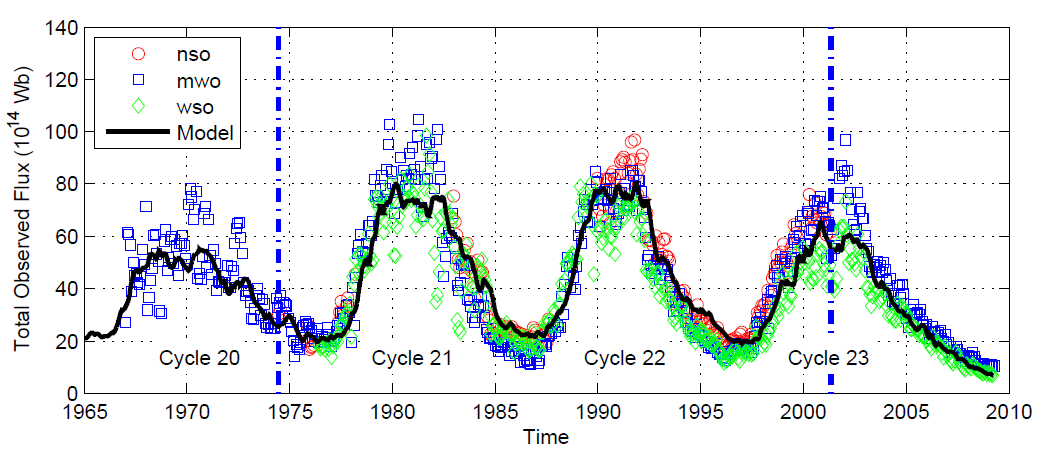CERN - Saying Nothing About Cosmic Ray Effects on Climate
Posted on 13 September 2011 by dana1981
CERN scientist Jasper Kirkby, about his recent cosmic ray experiment:
"At the moment, it actually says nothing about a possible cosmic-ray effect on clouds and climate, but it's a very important first step"
At CERN, Europe's high-energy physics laboratory near Geneva, Switzerland, scientists created an experiment to test how clouds are formed. The experiment ties in with a climate "skeptic" hypothesis that cosmic rays (charged particles from space) are causing global warming. As the hypothesis goes:
Solar magnetic field gets stronger => More cosmic rays are blocked from reaching Earth => Clouds, which are hypothetically seeded by cosmic rays, are less likely to form => Fewer clouds means more sunlight reaches Earth's surface => More sunlight means warmer temperatures => global warming!
Many climate "skeptic" bloggers and commenters have claimed that the CERN experiment has proven that cosmic rays are causing global warming, and that the experiment is "the final nail in the man-made global warming coffin" (i.e. here and here and here and here). It's always the final nail in the coffin, isn't it?

In reality, the CERN experiment only tests the bolded step in this list of requirements for cosmic rays to be causing global warming:
- Solar magnetic field must be getting stronger
- The number of cosmic rays reaching Earth must be dropping
- Cosmic rays must successfully seed clouds, which requires:
- Cosmic rays must trigger aerosol (liquid droplet) formation
- These newly-formed aerosols must grow sufficiently through condensation to form cloud-condensation nuclei (CCN)
- The CCN must lead to increased cloud formation
- Cloud cover on Earth must be declining
In short, the CERN experiment only tested one-third of one out of four requirements to blame global warming on cosmic rays. Whoops, not quite a nail in the coffin!

Additionally scientists have measured solar activity and the number of cosmic rays reaching Earth, and neither meets the first two requirements listed above. Both solar magentic field strength and the number of cosmic rays reaching Earth have been flat over the past 50+ years (Figure 1).
Figure 1: Solar Magnetic Field Strength from 1967 to 2009 (Vieira and Solanki 2010)
A number of other recent studies have also found that cosmic rays have minimal influence on cloud formation, and thus minimal influence on global warming.
As Dr. Kirkby said in the quote above, it is an important first step, just like buying eggs is an important first step in baking a soufflé. But just having some eggs doesn't mean I can bake a successful soufflé. There are a whole lot of other requirements necessary for me to bake a soufflé, and believe me, I don't meet them!
As is always the case, this climate "skeptic" declaration about "the final nail in the coffin" is no such thing. Not even remotely close. Every time they declare the man-made global warming theory dead, it comes back to life.

Note: Graphics provided by SkS user jg. This is the Basic rebuttal to CERN CLOUD experiment proved cosmic rays are causing global warming. Thingsbreak's CERN post has been adapted into the Intermediate version. The rebuttal can also be found at te short URL http://sks.to/cern.































 Arguments
Arguments































That kind of language is necessary to get a paper published in today's environment.The CERN paper also took years to negotiate and ended up worded in the weakest possible way. Notice the long list of authors on that paper.Almost like a petition signed by many supporters. You are right that much more work needs to be done to prove the whole theorybut it is unfortunate that rational discussion has to be done in coded language to avoid being banished.The poor understanding of the sun's electrical nature is another example where the establishment has prevented progress to preserve their reputations.Alfven won the Nobel prize back in 1970 for his 1942 breakthrough in understanding of the true nature of the sun. He was an electrical engineer (as I am)so his work was ignored by the establishment. Now they will soon be forced to accept it. Please read this recent paper rediscovering his work: http://www.sciencedaily.com/releases/2011/08/110801094253.htm[DB] Imputations of conspiracy betray a paucity of scientific basis for your position. And are also a contravention of the Comments Policy; future such violations will result in comment deletion. FYI.